How to build a house from SIP panels with your own hands
If you are looking for an opportunity to build a warm home for little money, consider building a house with SIP panels. The cost of a two-story "box" 10 * 10 meters without finishing is in the region of 17-20 thousand dollars. At the same time, there is no need for additional insulation, you can move into the house immediately after construction (if communications are connected) and you can immediately start finishing.
The content of the article
What is SIP panel
The construction of houses from SIP panels began in the second half of the last century in Canada. The technology is simple, the construction of a building requires very little time (from two to three weeks, depending on the complexity of the project), it can only be cheaper frame house, and even then not in all regions.
Houses are built from thermal insulation panels, which in themselves have sufficient strength. In English, these panels are called SIP, which is an abbreviation of the following name: Structural Insulated Panel. This translates as "Structural Insulated Panel". It turns out, in theory, in Russian, the name of this material should sound like KTP. In reality, the usual transliteration is used (replacing English letters with Cyrillic). As a result, the name "SIP-panels" is used.
This material consists of two OSB boards, between which a layer of expanded polystyrene (foam) is laid. It turns out a kind of sandwich (construction "multi-layer sandwich"). Hence another name - sandwich panels.
When building a house, there are two types of assembly:
- With frame (frame-panel technology). In private housing construction, a wooden beam is used; in the construction of high-rise buildings (there are some), the frame is made of steel.
- Frameless technology provides for the connection of panels using thermal splines - strip-inserts made of SIP panels of smaller thickness.
The first option is the most popular in our country. The wooden frame gives the structure additional strength. The load-bearing capacity of sandwich panels without a frame is more than enough for the construction of one-two-storey private houses. But knowing that at the heart of the house is a solid wooden beam is reassuring. This technology has one more advantage - maintainability. In case of problems, you can remove the damaged panel and replace it with a new one, which is impossible with frameless technology.
Advantages and disadvantages
Like any new technology for our country, the construction of a house from SIP panels has its adherents and opponents. The opponents have the most important argument - the unnaturalness of the materials, the possibility of releasing harmful substances. Indeed, these boards are composed of foam and OSB. Polyfoam is a familiar material and it is only dangerous during combustion. OSB has also been on the market for a long time; it is made from pressed coarse shavings and chips. Resins containing formaldehydes are added as a binder. It is this binder that raises the most questions: formaldehyde is a strong poison and its presence in the atmosphere in large quantities causes poisoning.
The emission of formaldehyde should be controlled by the SES (sanitary and epidemiological station), only safe building materials should be on sale.So if you decide to build a house from SIP panels, carefully choose the manufacturer - the quality of the material depends on his conscientiousness. The panels assembled on the German OSB firm Egger ("Egger") are recognized as the highest quality and safest. Their formaldehyde emission is E1 (safe).
Extract from GOST R 56309-2014 (date of introduction 2015-07-01): "Depending on the content (release) of formaldehyde, the plates are manufactured with emission classes E0.5, E1 and E2."
| Formaldehyde emission class of boards | Application of plates |
|---|---|
| E0.5; E1 | As structural elements of residential and public buildings, including for public premises, as well as products and structures used inside residential premises |
| E2 | For industrial products used outdoors |
Moreover, they easily tolerate high humidity, do not absorb water and do not deform.
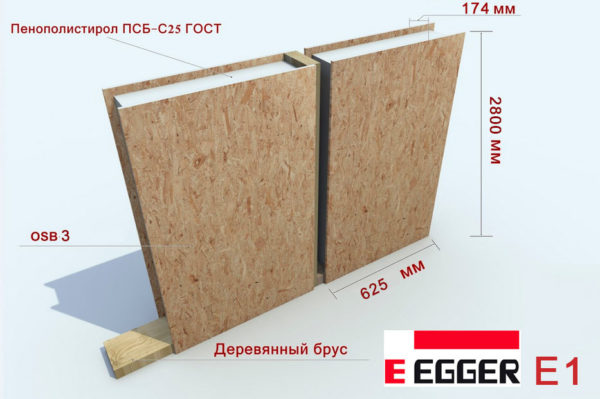
SIP-panel Egger E1 2800x625x174 (Romania) - the best option for walls. Height - 2800 mm, foam polystyrene thickness - 150 mm. If you prefer "standard" ceilings with a height of 2.5 meters, then you should purchase Egger E1 2500x1250x174
The German Glunz Agepan panels are also good, but few people use them. If we talk about Russian manufacturers, then you should pay attention to the products of the Kalevala company. In production, only safe and high-quality materials are used:
1. OSB-3 Kalevala Russia emission class E1;
2. Glue - TOP-UR (Russia);
3. Expanded polystyrene - PSBS - 25C Knauf (Russia).
Speaking about the advantages of building from SIP panels, it is necessary to pay attention to the fact that the technology is thoroughly worked out. Panels are produced for various elements of the house: external walls, partitions, interfloor ceilings, etc.
Why do people build houses from SIP panels? Because such a house has solid advantages:
- Light weight, which saves on foundation. For this type of buildings, pile or pile-grillage foundations.
- Low heat loss, low heating costs. Expanded polystyrene is an excellent insulation, and it is clamped on both sides with OSB sheets. This makes the sandwich panel house very warm.
- Low cost per square meter.
- Short construction time. The box of a two-story house can be assembled in a month.
- No shrinkage. Sediment can be at the foundation. The construction of SIP panels has no settlement.
- Finishing work can begin immediately after the box is assembled.
In general, it is this set of properties that makes people choose a home from SIP panels. They build both houses of permanent residence and summer cottages for seasonal visits. So, with a limited budget, building a house from SIP panels can be a very good solution.
How to build with your own hands
There are two ways to build a house from SIP panels with your own hands:
- Buy a house kit for a specific project in a company that deals with this, and assemble it yourself. Not all firms agree to this, but many have a supervised installation service. This is when a specialist of the company controls your installation.
- Buy plates. Cut them to the required size, purchase timber, all this is done independently. In this case, all responsibility for the quality of construction will fall on you. If you have carpentry skills or have someone to suggest, you can choose this option as well.
Briefly about what a home kit is. This is a set of ready-made SIP panels, a wooden beam of the required size and fasteners for the construction of a particular house. All components are cut at the factory and numbered. When assembling, you use the resulting blocks in a certain order. The process is reminiscent of building a house from a children's designer, only you assemble a real house.
A home kit is good if everything is done accurately. This is not only about the quality of SIP panels (it must be checked separately), but also about the use dry wood (chamber drying), and about the accuracy of the cut. The edges of the panels must precisely "wrap around" the timber, the two panels must be joined with an expansion gap of about 3 mm - all this is achieved using precision equipment.
Reference. The expansion gap is the required distance that is left between building materials that are subject to expansion (expansion). If the house is being built in a region with a humid climate (for example, the Leningrad region), then it is imperative to leave the expansion gap, otherwise OSB will swell. In dry climates, there is no need for a gap between OSBs.
Construction stages: photo report
Building a house from SIP panels, like any other, begins with the selection and construction of a foundation. A pile foundation is considered optimal for light houses. This is what they do in most cases, starting the construction of a house using SIP technology. Sometimes it is impossible to put a pile foundation:
- on hard soils that are too expensive to drill (rocks);
- on unstable soils with low bearing capacity (peat bogs);
- in the presence of cavities in the rock mass.
In these cases, do tape or slab (more often USHP - insulated Swedish plate). They are significantly more expensive, but more reliable.
After the foundation has been selected and calculated, you can start building it.
Making a pile foundation
Since the foundation is made of screw piles most often, we will illustrate exactly its manufacture. Piles are manually (if the soil and strength permits) or with the help of special equipment are screwed into the soil. The height of the heads is 80 cm above the ground level, the distance between the piles is not more than 2.5 meters.
Heads are welded to the installed piles, a strapping bar is attached to them (in this example, 200 * 200 mm).
Important! The joints of the timber must be on the heads without fail. When laying the strapping beam, do not forget to coat the locks with a protective compound (bituminous mastic) before joining.
To protect against decay and insects, the harness bar is impregnated with a protective compound. Roofing material was laid under the beam (on the head) in two layers.
This stage takes 3-4 days to a week. Depends on the complexity of the soil, you work with the technique or twist yourself. Now you can start laying floor slabs, but before that, we should familiarize ourselves with the methods of connecting them.
How to connect SIP panels: the basic principle
When connecting the panels, a wooden dowel (timber) and or a thermal dowel (a section of a SIP panel of smaller thickness) are inserted between them. As mentioned above, in our country, technology using a frame is more popular, i.e. dry timber is used as a key. It is on this option that we will focus our attention.
The bar is inserted into the groove and fixed with self-tapping screws and / or nails, which are twisted / hammered through the OSB into the body of the bar. If you have a nail gun, we initially recommend grabbing the panels with "yellow" self-tapping screws for wood 40-50 mm long, and then punching the joints brushed nails 50-65 mm long in 10-15 cm increments.
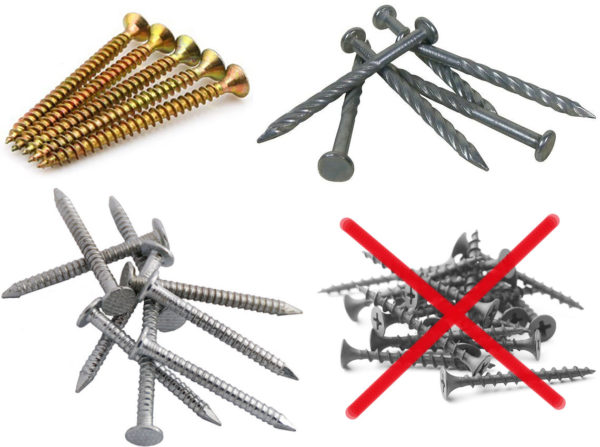
As a fastener for SIP panels, you can use: "yellow" wood screws, galvanized screw nails, galvanized pierced nails. Do not use "black" hardened self-tapping screws - they break off and quickly corrode
There is always a risk that the connection will turn out to be leaky, and the entire construction technology from SIP panels is based on the thermos effect, that is, on maximum tightness. Therefore, before assembling this unit (and any other), mounting foam is applied to the side surface of the panel. It fills all the gaps, providing the proper level of heat and moisture insulation.
Note! The picture above shows a double bar key. Often, such recommendations are perceived wrongly, and in order to save money, an unplaned edged board of 50x150x6000 mm of natural moisture is purchased. Once the board has dried, the joint is unlikely to remain airtight.
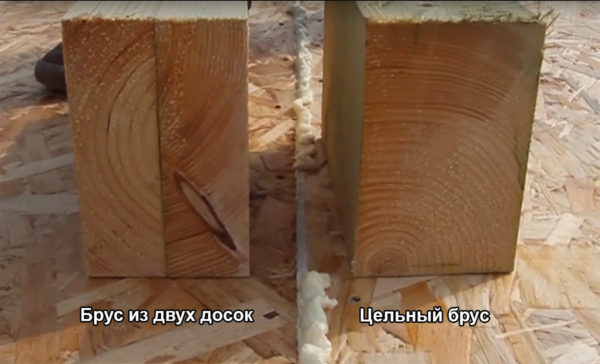
If you are not on a budget, we advise you to use a solid timber made of dry, chamber-dried planed wood
In the manufacture of a composite wooden dowel 100 * 150, in our opinion, it is preferable to use three dry bars with a cross section of 50 * 100 mm - in this case, the joints overlap (see video below).
When it comes to wall panels, it makes sense to insert and fix the dowels well in advance.
The foam was applied, a timber was inserted, and secured with self-tapping screws. Foam was applied to the side face of the second plate, the groove was brought under the protruding part of the beam, the expansion gap was set at 3 mm, and it was fixed with self-tapping screws. The foam that has crawled out of the seams during installation is cut off after polymerization.
This technique is repeated with minor modifications in any SIP panel connection. The diagram of this node is presented above.
After cutting the slabs, it becomes necessary to remove the expanded polystyrene to the required depth. For these purposes, an electric thermal knife (cutter) for foam plastic is used. They come in various designs, but the thermal knife must be equipped with a limiter. Only then will you be able to remove the expanded polystyrene exactly to the required depth. "Overkill" is fraught with the fact that cold bridges may appear at the junction of the panels.
The cutter can be made by hand, but at the same time do not forget about safety when working with electric current.
First overlap
The first floor is nothing more than a floor that does not require insulation. As melted, it is assembled from SIP panels 224 mm thick and 625 mm wide. With this width of slabs, the wooden beams are spaced in increments of about 60 cm, which is enough to support the load.
If you have slabs with a width of 1250 mm, then they must be sawn lengthwise into two equal parts.
When installing the floor, the panels should be laid like bricks in the masonry - with a mismatch of the seams (staggered). This is necessary so that the seams do not jar when the humidity rises.
To protect the bottom OSB slab from moisture, each of the slabs is coated on one side with the same bitumen mastic. You can use other compositions with similar properties.
When connecting the plates, a mounting bar is laid between them (diagram in the previous paragraph). The timber is attached along the edges to the strapping (with long nails), and the edges of the slabs to it with self-tapping screws.
We cover the side cuts of the slabs (all floors) with an edged board of a suitable size. Apply foam to the side surface of the slab with a snake, then attach the board, fasten it through the OSB with self-tapping screws to the end of the board.
A starting (crown) board is laid on top of the sandwich along the perimeter, on which the wall SIP panels will rest. It fits around the perimeter and in those places where partitions will be installed.
The crown boards are fastened with nails / self-tapping screws, but for confidence they were fixed through and through with studs to the pile heads. Holes were drilled under the studs. A hairpin is driven into them, tightened with bolts.
Walling
We continue the construction of a house from SIP panels: we mount the walls of the first floor. For this work, it is desirable to have two assistants, then the process will go faster and easier.
Wall installation starts from one of the corners.When installing, the panel is “put on” with a recess in the bottom part of the installed starting board (first apply a layer of foam to the board or the end of the sandwich). The panel is placed, aligned vertically, attached to the starting board from both sides with self-tapping screws in increments of 10-15 cm.
Foam is applied to the side surface of the installed board, another board is set at an angle of 90 °. A mortgage board (end bar) is pre-attached to its side part, the thickness of which is equal to the depth of the groove. Like the first, this panel attaches to a strapping launch board.
In addition, we fasten the corner with the help of long self-tapping screws.
The length of the self-tapping screw should be such that it goes through the slab and the entire thickness of the mortgage board. The installation step of this fastener is 40-50 cm.
Further, the walls of SIP panels are assembled according to the same principle: we put a bar between the plates (if it was not previously inserted), we attach the next plate to it and to the lower strapping. Simple and fast.
In window and door openings, for more reliable fastening, you can install metal perforated reinforced corners. The element is optional, but it adds rigidity and instills confidence.
The installation of partitions made of SIP panels is carried out according to the same principle: we fasten the crown board, to it the partition blocks. They can be the same thickness as the exterior walls, but thinner ones can be used. The decrease in sound insulation properties is compensated for by the interior decoration.
To save money, partitions can be made using frame technology. Then initially only the frame can be installed, and its skin can be transferred to a later period. It is more convenient to do this when the roof is already installed.
Interfloor overlap
To install floor slabs in the grooves of wall panels, boards are installed on foam and self-tapping screws. They create a strapping for the installation of the ceiling.
Next, we lay the floor slabs. If the partitions are assembled from SIP panels, their bearing capacity is quite high and additional reinforcement measures are not required. If the partitions were assembled using frame technology, we make the upper beams reinforced: they are assembled from three boards glued together. For greater strength, the beams can still be fastened on both sides with self-tapping screws.
Floor slabs from SIP panels are laid on the finished frame. They should be no more than 625 mm wide, they should be laid apart (with a mismatch of the seams). Since the panels are narrow, there is a lot of timber in the ceiling. Due to this, such an overlap can withstand loads in places where there are no floor beams.
We fasten the laid slabs to the strapping bar with screws or nails. The edges of the OSB are above and below each intermediate bar. After fixing the installation of the ceiling, we close the open side cuts along the perimeter of the building according to the same principle: foam + edged board. For greater rigidity, in those places where the floor beams pass, we fasten the floor panels with long self-tapping screws (220 mm) through and through.
This stage after assembling the first floor does not seem difficult. All the same, only work at height, tightening sandwich panels is longer and more difficult than installing them.
Second floor walls
The second floor in this project is attictherefore the wall panels are low. We install partitions along with the outer walls. Before installing the roof, an embedded beam is installed in the upper open groove, and roof SIP panels will be attached to it.
Under the gables, you will have to cut the standard panels, since the shape here is non-standard.The installation and connection of the wall panels themselves on the second floor is no different.
Roof from SIP panels
Special sandwich panels are used for the roof. Under them, the ends of the slabs are cut at a certain angle, which is determined by the angle of inclination of the roof slope. Here, just as with flooring, you can get by with a minimum of beams, because each connection has its own beam. Therefore, the rafter system is not assembled.
Skate decoration
The roof of a small and medium-sized house made of SIP panels, usually has a central ridge beam. Two roof planes converge here. This node can be decorated in two ways (in the pictures below). The first is symmetrical. Sandwich panels are cut at an angle, the top of the ridge beam is cut at the same angle. Two planes are fastened with long self-tapping screws through the panel to the beam on both sides. The step of installing the fasteners is 30-40 cm.
In this method, the usual timber is absent between the two plates, they are connected only for foam. After the foam polymerizes, the excess is cut off, the seam is treated with a waterproof sealant, after which a protective strip is put on the ridge - made of metal, plastic, etc. - depends on the selected type of roofing.
It is possible to dock roof SIP panels on the ridge in another way. The second method does not require cutting the slabs at an angle, but one part of the slabs must be longer (by the thickness of the roof slab). The beam is still cut at an angle, the slabs are joined at right angles, and they are fastened through with long screws to the beam.
Embedded end bars are used in this connection. They are installed as usual - on foam and self-tapping screws. To block the access of moisture to the under-roof space, the junction of the two panels is also additionally coated with a waterproof sealant.
There is an option of installing a roof from SIP panels and without a central beam. There are roof options with two load-bearing beams that are not centered. These can be either specially laid floor beams, or partitions assembled from SIP panels or using frame technology. In the second case, it is better to reinforce the beams (make them prefabricated with glue and nails).
In this knot, the most difficult thing is to cut the embedded beams at the right angle. This can be done on the ground, which greatly simplifies the task. The panels are fastened through the slab with long self-tapping screws to floor beams or embedded in partitions. Also, two planes are fastened to each other at the junction - from opposite sides with long screws.
Roof and wall panel joints
For the laying of SIP roofing boards, the wall boards are cut at the desired angle. The inside of the OSB is obtained above the outside. At the same angle, the foam is "cut", the edges of the embedded beam are cut. It is this part that is the most difficult if you did not buy a house kit, and you build a house from SIP panels from standard panels, cutting them to the required dimensions with your own hands.
If you have the right equipment, it is not a problem to cut them at an angle. The problem is to cut foam plastic between the OSB boards to the desired depth. The core can be removed with a thermal knife and then removed by purely mechanical means. Most likely, the cut will not work out evenly, so you will have to add more foam to fill in the unevenness.
In the pictures, the roof overhang is also made of insulated slabs. It is easier to implement, but it is an unreasonable waste. To save money, the length of the SIP panel is taken before the intersection with the walls, and then only the timber goes (as in the photo).In this case, the beam is made composite: one part is longer by the amount of overhang, the second is shorter and ends where the wall ends.
Features of joining roofing plates
The connection of two roofing slabs occurs in the same way as the others: timber, foam, screws. But since precipitation is possible here, it is advisable to seal all the seams.
To improve the tightness, all seams on the roof are additionally coated with a waterproof sealant. First, the frozen foam is cut into a plane with the roof, then a sealant is applied. After filing the overhangs, it can be considered that the construction of a house from SIP panels is completed. Insert windows / doors, install communications and the dwelling is already suitable for living. Finishing can be done immediately after installing the box.
Mice and other troubles
To save our readers from unnecessary headaches, we decided to tell you about the mistakes made during the construction of one residential building. The material is primarily intended for those who hire contractors for construction. However, it will be useful for those who build a house on their own.
The object was built under the Rural House program, and local would-be builders acted as a contractor. Unfortunately, the future tenants did not pay due attention to the quality of the work. The result is natural - a large number of significant "stocks".
Brief information about the house:
- Commissioning date: 2008
- Floors in Building: 2
- Foundation type: tape
- Technology: frameless
- Panel sizes: 2740x1220x224 (floors), 2740x1220x174 (walls), 2740x1220x145 (key for joining wall panels)
The problems appeared pretty quickly and were associated with the most important part of any structure - the foundation. The strip foundation was poured with poor quality concrete, which led to the fact that when moisture got into it, it began to crumble.
In extreme cold (below -30 ° C), another "jamb" was revealed - a part of the plastic floor plinth in the kitchen was frozen.
It was decided to remove the bottom vinyl siding panels, remove the cold bridges in the places where the wall slabs adjoin to the first floor ceiling and sheathe the foundation with a profiled sheet under the stone.
After dismantling the lower siding panels, signs of the vital activity of field mice appeared.
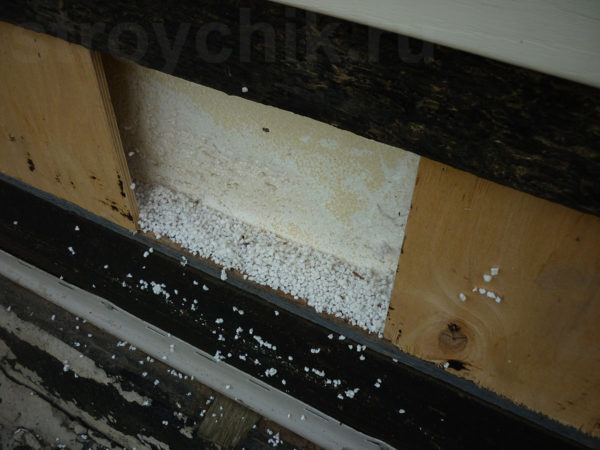
During construction, the ends of the ceiling were not covered with a board. Pieces of plywood are installed, between which there are large distances. Also note that the roofing material does not start from the timber, but from the floor level
Brief explanation of roofing material. At the time of the construction of the house, in a particular settlement, they had not heard of vapor-permeable membranes. The contractor was going to put plastic wrap on the walls. This was opposed by the customer, as a result, roofing material was used.
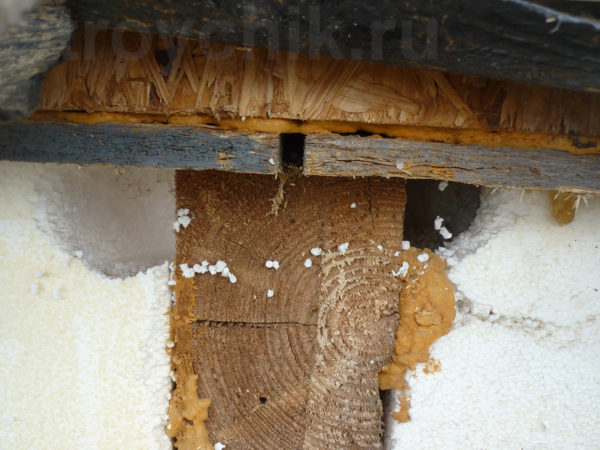
Together with freezing of the plinth, mouse holes were found and the seam between the OSB was not foamed.
As a result, the owner of the house had to neutralize the consequences using his modest construction experience.
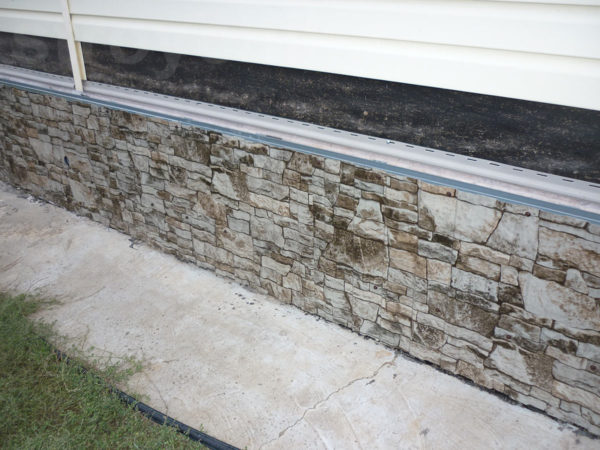
The possibility of access of mice to expanded polystyrene is preliminarily blocked, then the foundation is sheathed with a profiled sheet
Associated errors:
- The lower part of the first floor slab has not been treated with bitumen mastic.
- SIP panels with a width of 1220 mm were laid on the floors of the first and second floors (they had to be cut in half lengthwise).
- Used raw wood.
- The panel for the production of thermal dowels is thinner than the polystyrene foam layer.
- The corners of the house are not tightened with long screws.
- Self-tapping screws are exclusively black.
There were other mistakes, but we do not talk about them, since they do not directly relate to the technology of construction of self-supporting insulated houses.
Alas, the case discussed above is not the most difficult - the fatal option is discussed in the video below.
The conclusion is very simple: you should not blindly trust the customer.All stages of construction must be controlled personally, or seek the help of a knowledgeable person from outside.
If contractors are engaged in construction, then the quality of their work can be assessed already at the stage of acceptance of the first floor slab.
Owner reviews
In conclusion, we suggest that you familiarize yourself with the video reviews of real owners of houses from SIP panels.
conclusions
A house made of SIP panels assembled in compliance with technology will serve faithfully for more than a dozen years, it will be comfortable to live in it.
If you choose between a frame house and a house made of SIP panels, then after weighing the pros and cons, we advise you to choose the second option. In any case, the decision is only yours.

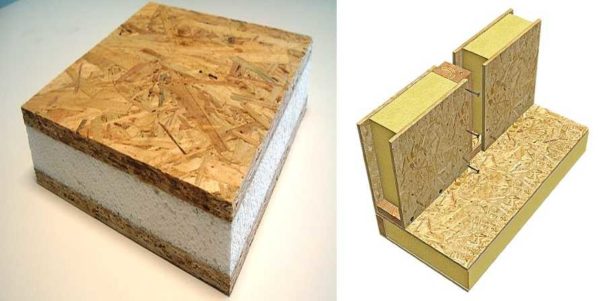
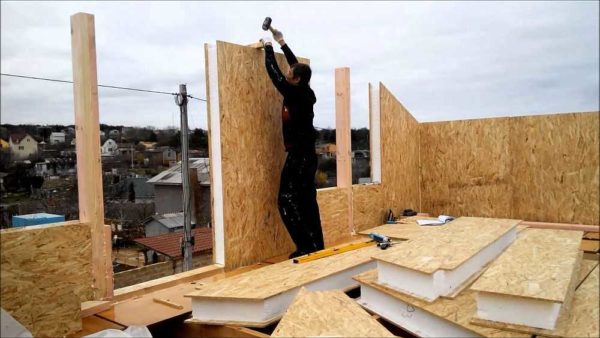
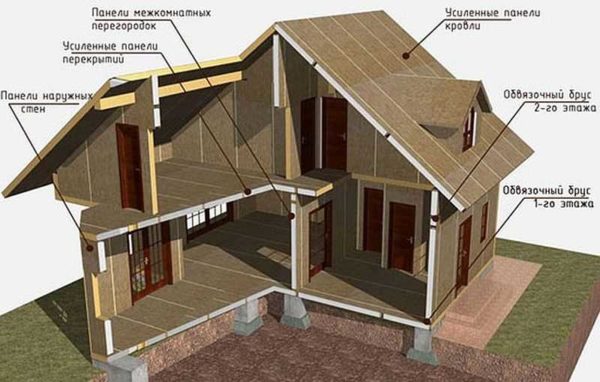
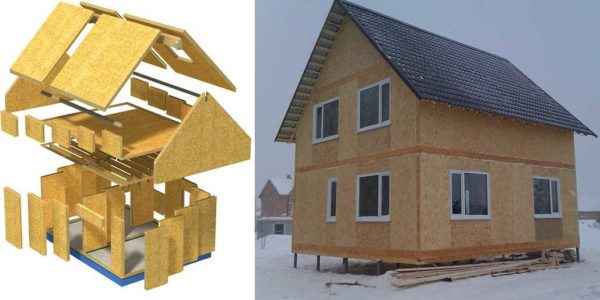
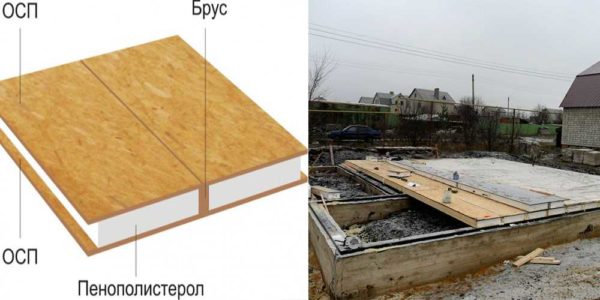
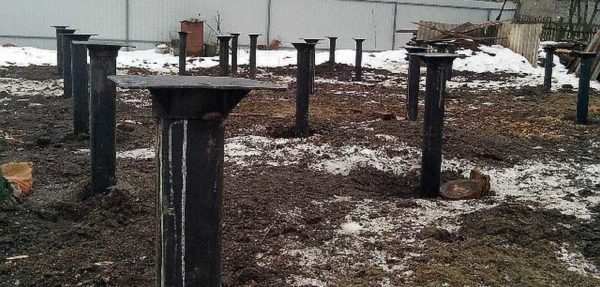
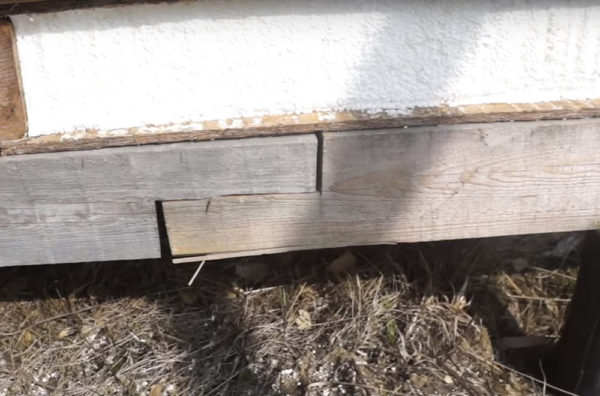
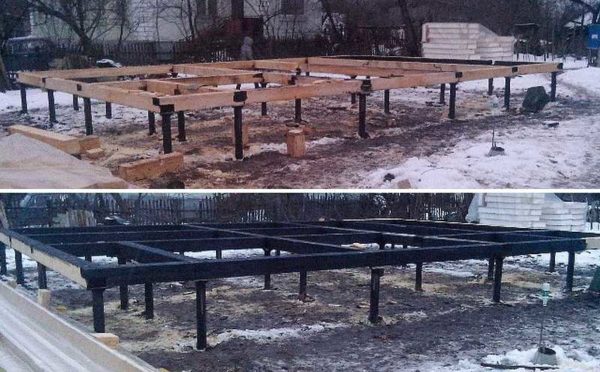
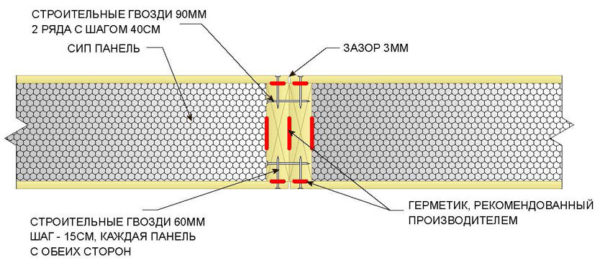
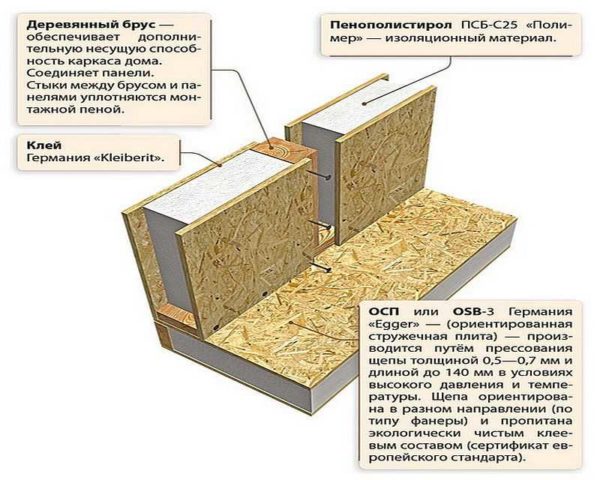


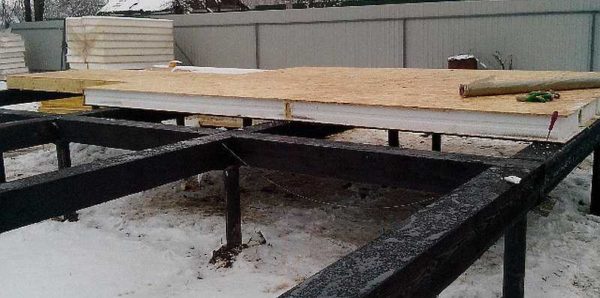
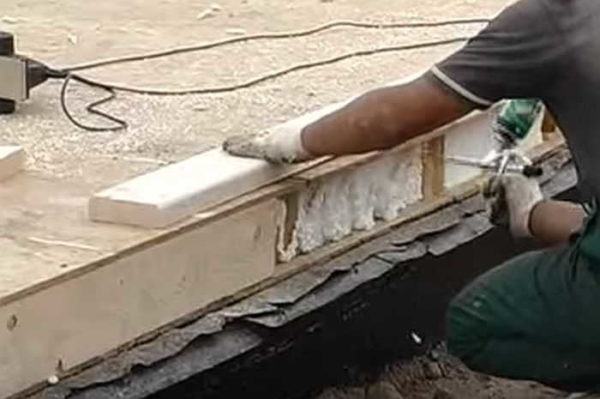
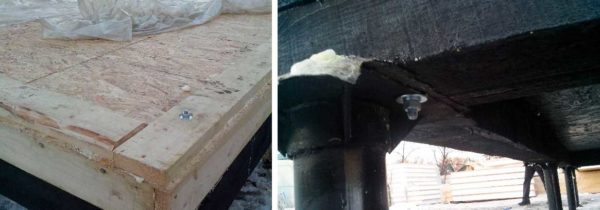
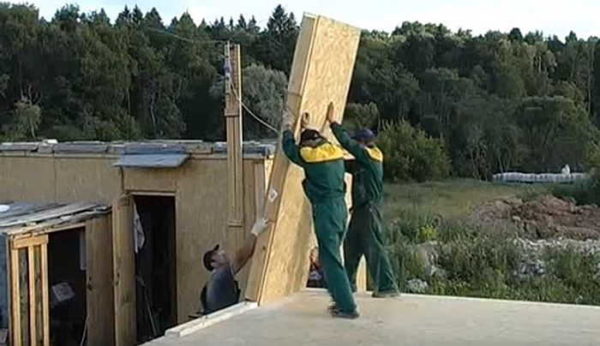
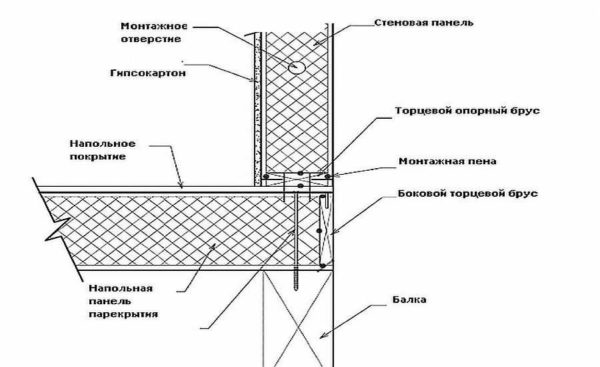
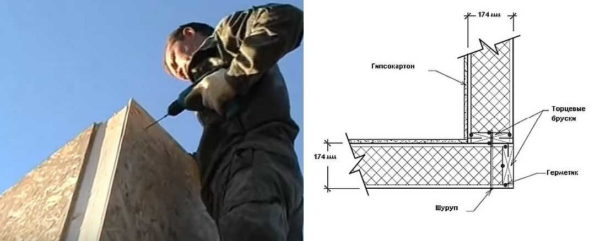

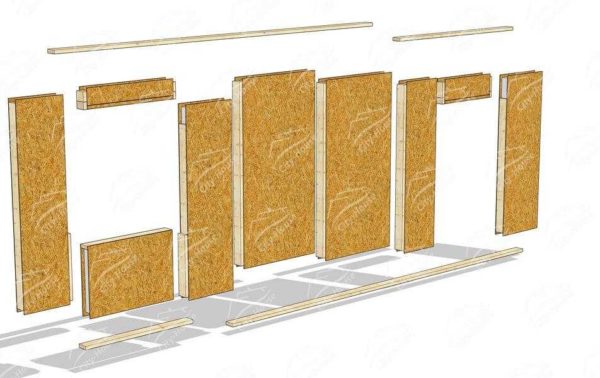
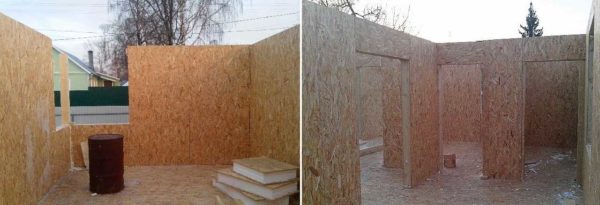
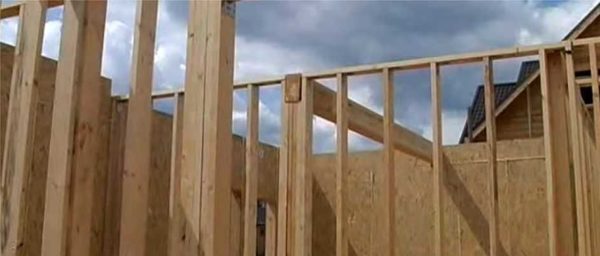
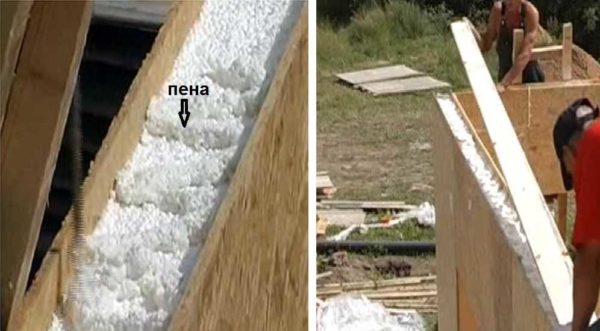
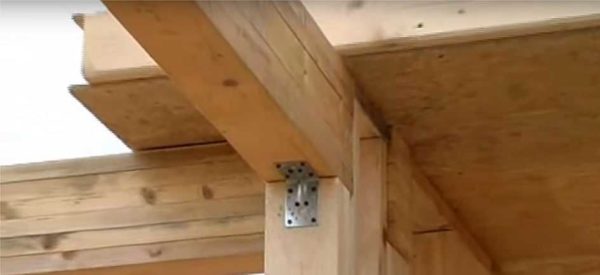
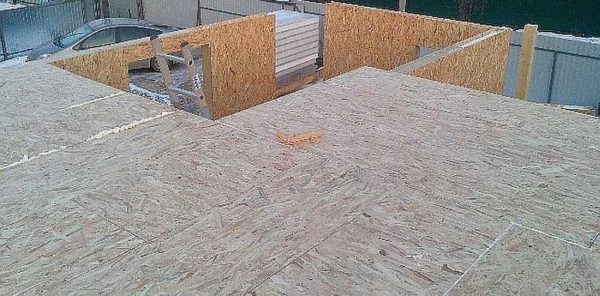
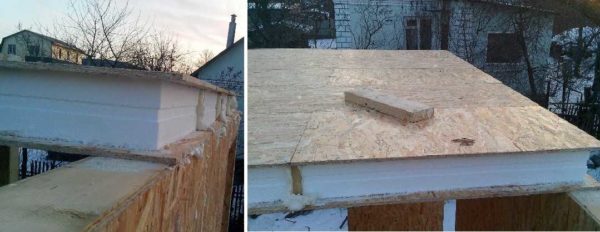
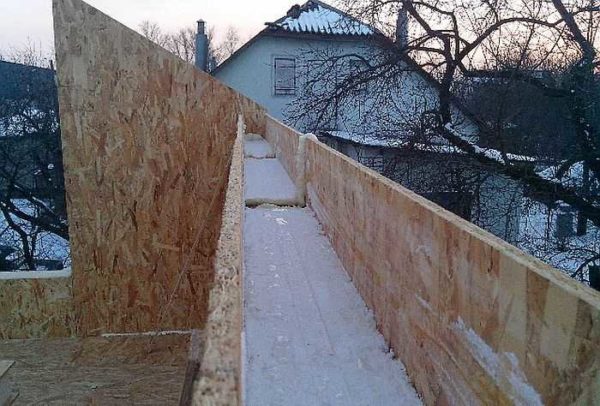
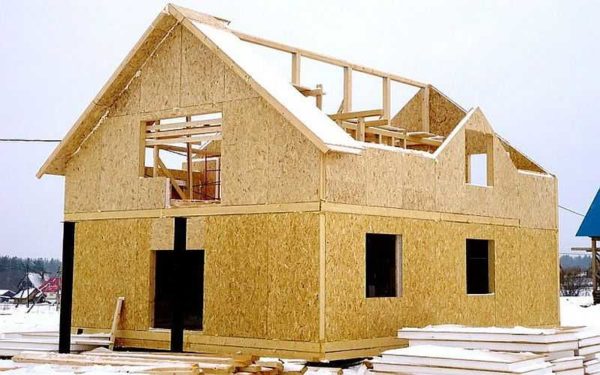
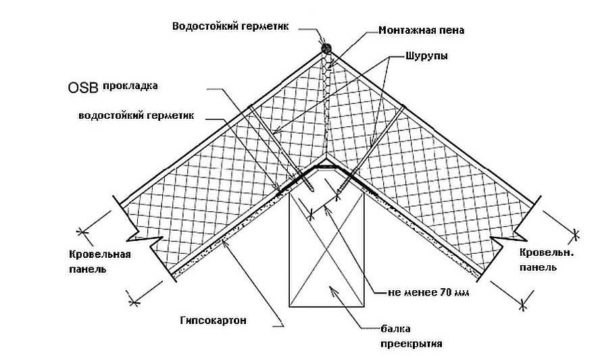
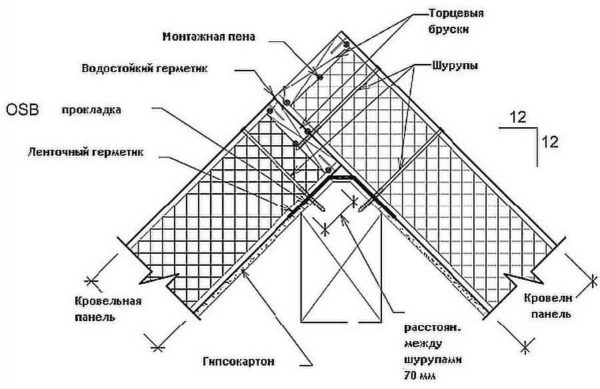
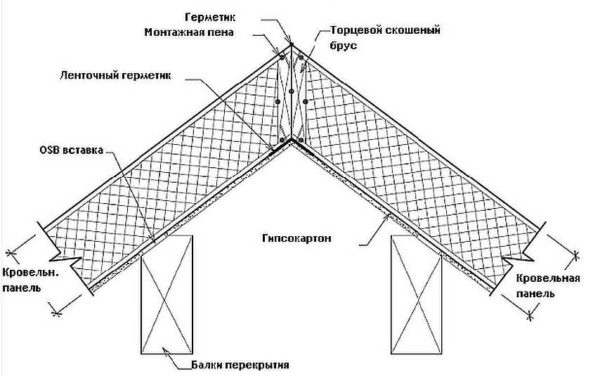
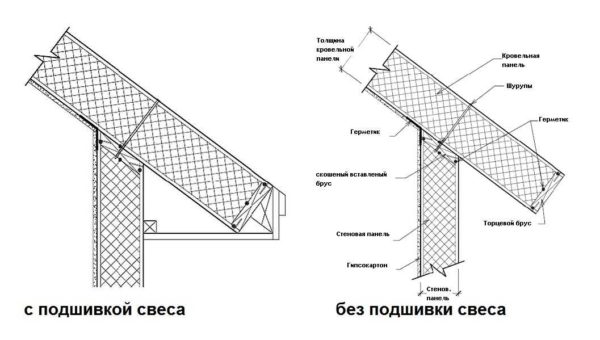
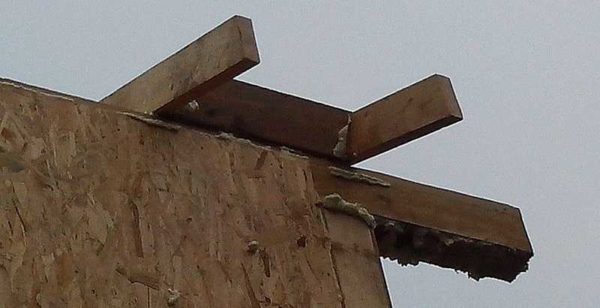
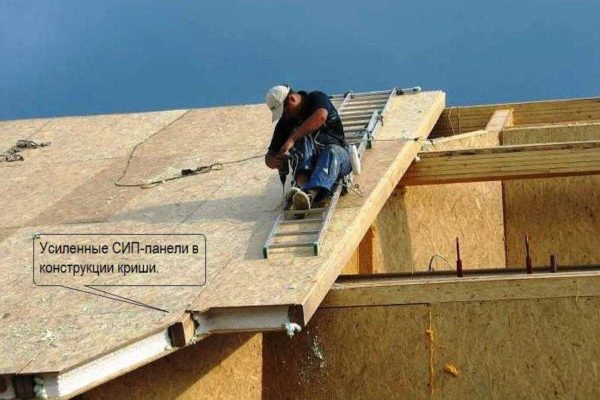
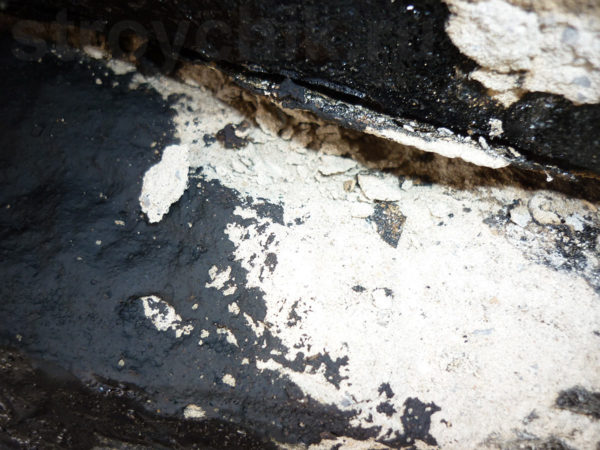
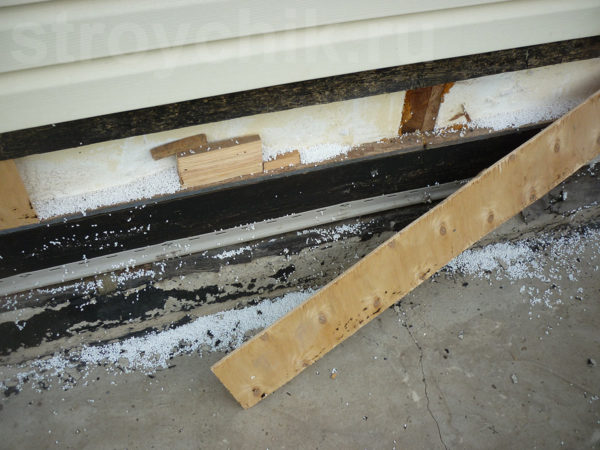










I will most likely have a board of natural moisture as a starting point. What nails are better to use in this case?
As far as I know, for wet woods it is recommended to use round nails. For dry, both perforated and screw can be used.